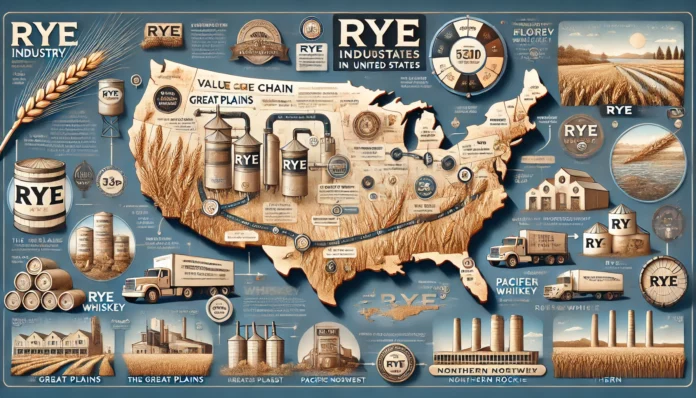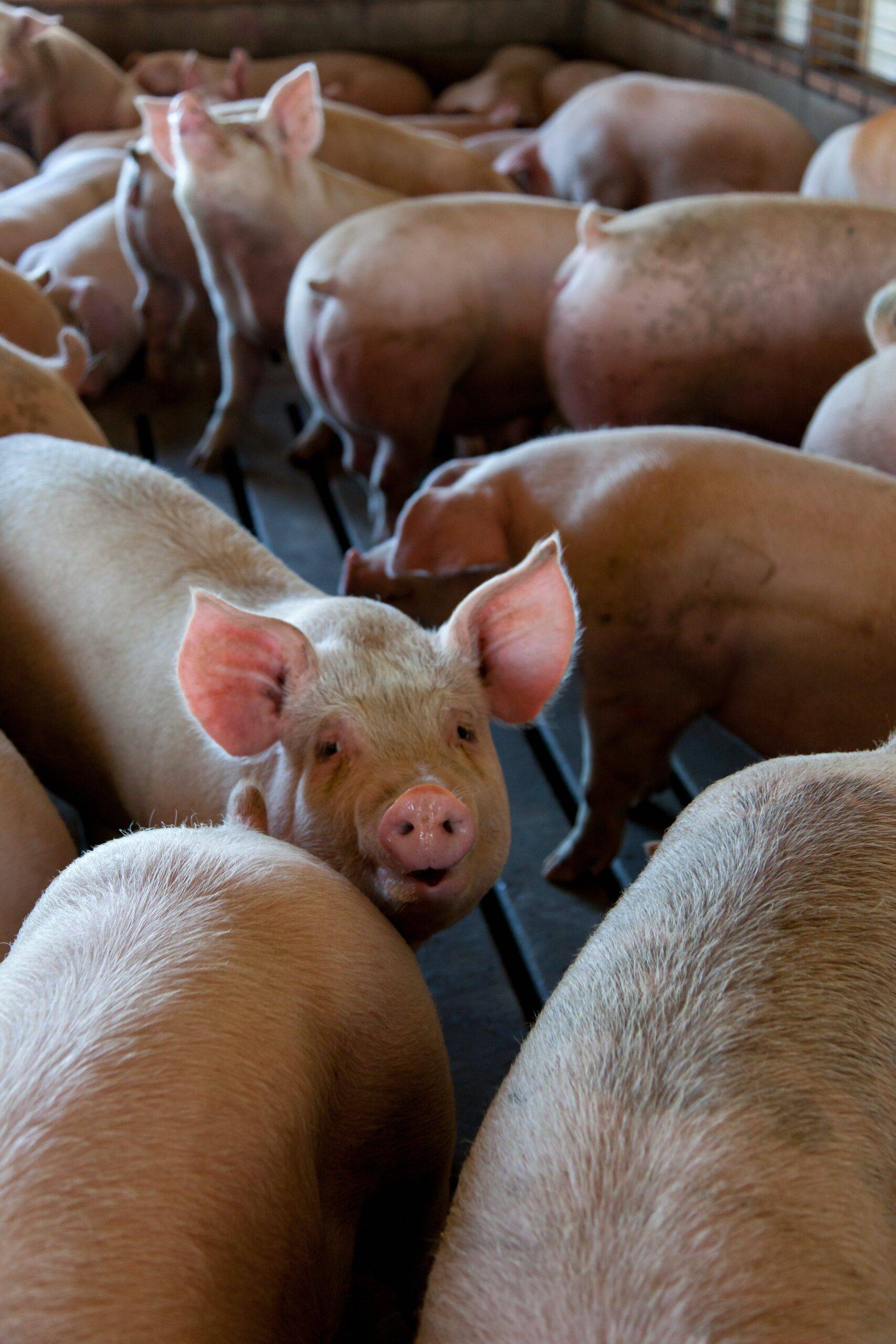
Introduction
Rye (Secale cereale) is a versatile and hardy cereal grain, well-known for its use in bread-making, alcoholic beverages, and animal feed. Although rye is not as widely cultivated as other grains like corn and wheat in the United States, it still plays an important role in American agriculture. Rye is particularly valued for its ability to grow in cooler climates and poorer soils, making it an essential crop in certain regions.
In the United States, rye is grown primarily for two purposes: as a food crop (especially for rye bread and rye flour) and as a cover crop to improve soil health. Rye’s role in crop rotation and its benefits for soil erosion control and nutrient cycling make it a valuable part of sustainable farming systems.
This report will explore the largest rye-producing regions in the United States, looking at the geographic areas where rye thrives, the factors influencing its production, and the role these regions play in the overall U.S. rye industry.

Why is Rye Important in the United States?
Rye is grown in the U.S. for various uses, ranging from bread production to distillation. In particular, rye is a key ingredient in the making of rye whiskey, one of the most famous spirits in the country. Additionally, rye plays a significant role in producing rye flour for bread and other baked goods, which are popular in certain regions.
Rye is also valued for its environmental benefits. As a hardy, cool-weather crop, rye is often used as a cover crop during the winter months, particularly in northern regions. When used as a cover crop, rye helps reduce soil erosion, improve soil fertility, and suppress weeds. Rye’s resilience in harsh growing conditions makes it a suitable choice for farmers who may face challenges with other crops.
Top Rye-Producing Regions in the United States
While rye is grown in several states across the U.S., certain regions are known for their significant rye production. The following are the largest rye-producing areas, each with unique growing conditions and agricultural practices that make them suitable for rye cultivation.
1. Great Plains (Kansas, Nebraska, and South Dakota)
The Great Plains, encompassing states like Kansas, Nebraska, and South Dakota, is one of the largest regions for rye production in the United States. This area is known for its vast, open fields and suitable growing conditions for cereal grains. Rye is well-suited to the harsh climates of the Great Plains, where cold temperatures and dry conditions prevail during the winter months.
Kansas is the largest producer of rye in this region, thanks to its fertile soil and ideal growing conditions. Rye is often used in crop rotation systems to help maintain soil health and prevent erosion. In Nebraska and South Dakota, rye is grown both as a food crop and as a cover crop to enrich the soil for other crops like corn and wheat.
The Great Plains region’s contribution to the U.S. rye market is particularly important because of the area’s ability to produce rye in larger quantities and export it to other parts of the country and internationally. Rye produced in these states is used for rye flour, animal feed, and rye whiskey production.
2. Midwest (Michigan, Ohio, and Indiana)
The Midwest is another major region for rye production in the United States, with states like Michigan, Ohio, and Indiana leading the way. The Midwest is known for its rich soil and favorable climate for a wide variety of crops, including rye. Rye thrives in the cooler temperatures and well-drained soils of this region, making it an important crop for farmers in the area.
Michigan is particularly known for its production of rye for the food industry, especially rye flour. Rye bread is a popular product in many households in the state, and the demand for high-quality rye flour drives much of the rye cultivation in Michigan. Ohio and Indiana also contribute significantly to rye production, particularly in terms of rye used for animal feed and as a cover crop.
The Midwest’s role in rye production is essential for both domestic consumption and export, particularly to markets that value rye for food and beverage production. The region’s infrastructure and access to markets make it an important hub for rye cultivation.
3. Northeast (New York, Pennsylvania, and Vermont)
The Northeast, particularly New York, Pennsylvania, and Vermont, is another key rye-producing region in the U.S. Rye is well-suited to the cooler climates and shorter growing seasons of the Northeast, and it is often grown alongside other small grains like oats and barley.
In New York, rye is widely cultivated for both food production and distillation. Rye whiskey is a popular spirit in the state, with several distilleries using locally grown rye to produce craft whiskeys. Pennsylvania also has a long history of rye production, particularly in the form of rye flour for bread-making. Vermont, known for its artisanal food products, has seen a growing interest in locally grown rye for small-scale bread-baking operations and farm-to-table restaurants.
Rye’s role in the Northeast goes beyond food production. Rye is also commonly used as a cover crop, particularly in Vermont, where it helps prevent soil erosion and enriches the soil for other crops. The Northeast’s diverse agricultural practices, combined with its rich history of rye cultivation, make it a vital region for rye production in the U.S.
4. Pacific Northwest (Washington and Oregon)
The Pacific Northwest, including Washington and Oregon, is another region where rye is increasingly being grown, particularly for craft distilling and specialty food markets. The cool, moist climate of the Pacific Northwest is ideal for growing rye, especially in areas where traditional grain farming is common.
In Washington, rye is cultivated both for food production and for its role in craft distilling. Rye whiskey has gained popularity in the region, and distilleries use locally grown rye to create unique, high-quality spirits. Oregon is also known for its production of specialty rye products, including artisanal rye bread and other rye-based baked goods.
While the Pacific Northwest does not produce as much rye as other regions like the Great Plains, its growing role in specialty markets has helped increase demand for rye cultivation. Rye is increasingly valued for its flavor profile and versatility in food and beverage products.
5. Northern Rockies (Montana and Wyoming)
The Northern Rockies, including Montana and Wyoming, is a lesser-known but important region for rye production in the United States. The cold temperatures and rugged terrain make this area an ideal place for growing hardy crops like rye. Rye is often used as a cover crop in the Northern Rockies, helping improve soil structure and prevent erosion during the winter months.
In Montana, rye is grown for both food production and livestock feed. The state’s agricultural focus on grain production makes rye a natural fit for local farmers, who use it to support crop rotation systems and diversify their grain offerings. Rye’s ability to grow in less-than-ideal soil conditions makes it a valuable crop for farmers in the Northern Rockies.
Factors Driving Rye Production in the United States
Several factors contribute to the success of rye production in the United States. These factors include:
- Climate Conditions: Rye thrives in cooler temperatures and can be grown in regions with short growing seasons and harsh winters, making it ideal for areas like the Great Plains, the Midwest, and the Northeast.
- Soil Quality: Rye is known for its ability to grow in less fertile soils, which makes it a valuable crop for areas with marginal land or those focused on sustainable farming practices.
- Crop Rotation: Rye is commonly used in crop rotation systems to improve soil health and reduce soil erosion. Its deep root system helps maintain soil structure and fertility.
- Rye Whiskey Production: The growing demand for rye whiskey, particularly in craft distilleries, has driven interest in rye cultivation, particularly in the Pacific Northwest and Northeast regions.
- Market Demand: Rye’s versatility in both food and beverage production, as well as its use in animal feed, continues to fuel demand for rye, especially as consumers seek more diverse and sustainable food options.
Conclusion
Rye is an important crop in the United States, and its cultivation spans several regions, each with unique growing conditions that make it suitable for rye production. The Great Plains, Midwest, Northeast, Pacific Northwest, and Northern Rockies are the top rye-producing regions in the U.S., each contributing to both the domestic market and the global rye trade.
As demand for rye-based products like rye bread, rye whiskey, and animal feed continues to rise, these regions will remain key players in the U.S. rye industry, helping to meet the growing global demand for this versatile and hardy grain.


